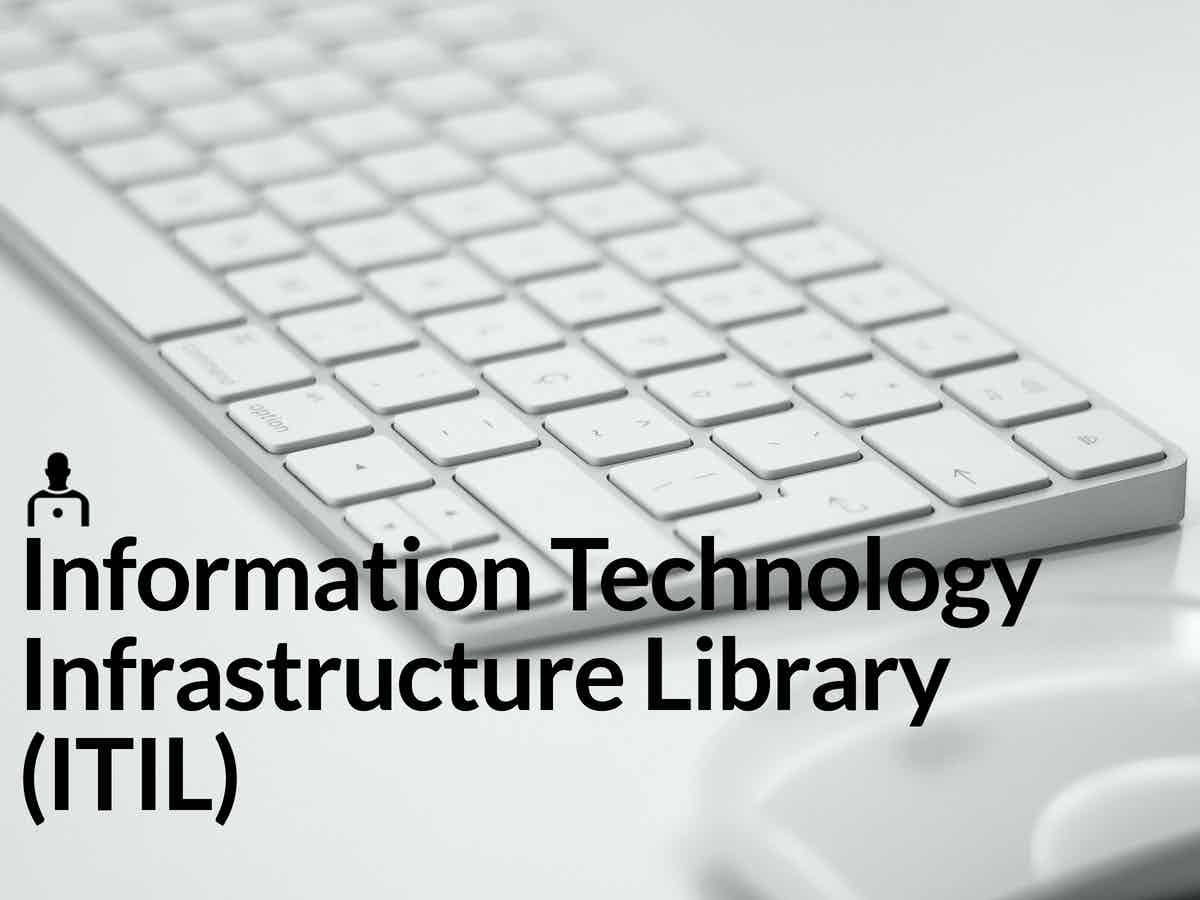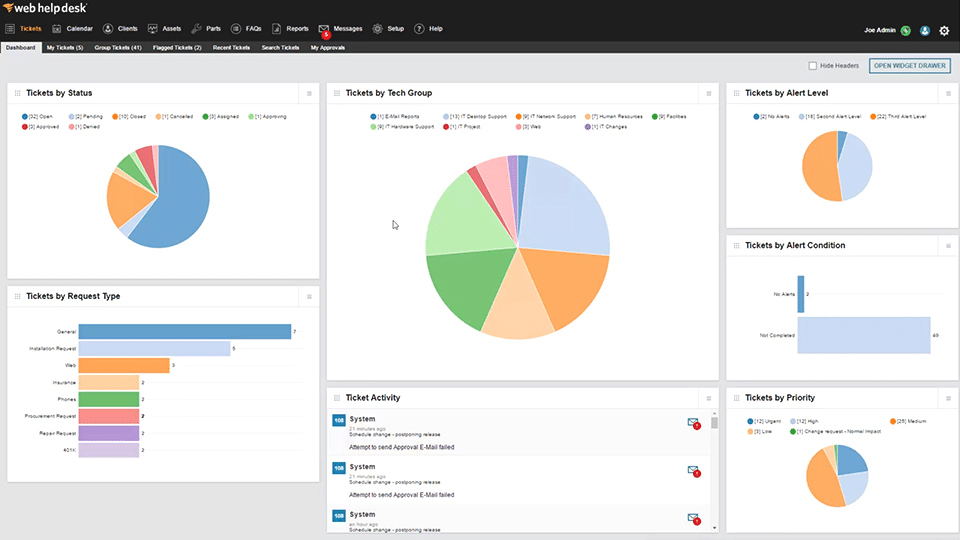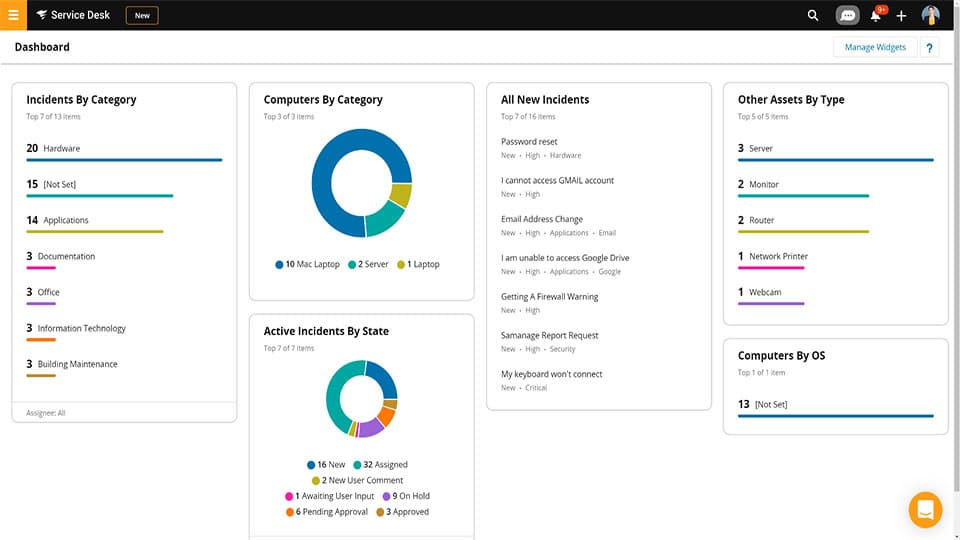Delivering high-quality IT services consistently is what differentiates leaders from others. It also contributes to a positive brand image, improved customer loyalty, and increased revenue.
That said, achieving this high quality and maintaining it is not easy and requires best practices and resources. This is where the Information Technology Infrastructure Library (ITIL) comes in handy.
What is ITIL?
ITIL can be loosely defined as a framework that encompasses a set of best practices aimed to consistently provide high-quality IT services to customers. These best practices span across processes, people, and technology to ensure stability and agility within the organization.
Further, it helps to align IT services and their delivery with the larger goals of the business, besides providing the standardization required to establish a growing customer base and loyalty.
A Brief History of ITIL
ITIL had its nascent beginnings in the early 1980s when data centers started spreading around geographies to cater to businesses around the world. However, this decentralized model did not spread equally, which meant, there were gaps in deployment and the resultant performance of IT services.
This was when the UK’s Central Computer and Telecommunications Agency (CCTA) understood the importance of having a set of practices for ensuring consistent performance and deployment of IT services. This led to the development of the Government Information Technology Infrastructure Management (GITIM).
In continuation with it, the CCTA released the first version of ITIL in April 2001. The second version was published in 2006, and the third version in May 2007 respectively. Recently, ITIL 4 was published to create value and make organizations more successful in today’s digital environment.
What is ITIL 4?
Now that ITIL 4 is the latest version, let’s take a more in-depth look at it.
Goals of ITIL 4
ITIL 4 is designed to help organizations accomplish the following:
- Helps organizations to understand the impact of your organization’s strategy.
- Guides professionals to learn and implement the concepts of service management in a wide context.
- Makes it easy to navigate change in a dynamic environment.
- Introduces collaborative working practices, especially in the wake of the COVID pandemic.
- Helps to build trusted relationships with both internal and external stakeholders.
- Develops an effective communication strategy.
- Works well with complex systems and processes.
- Strives to make an organization a natural industry leader.
Due to these wide-arching goals, ITIL is considered to be one of the most comprehensive and universally-accepted frameworks in the world today.
Salient Features of ITIL 4
Here’s a look at some of the salient features of ITIL 4.
- The architecture of ITIL 4 is highly modular when compared to its previous versions, to meet the needs of a complex and rapidly-evolving.
- Introduces a new system called the Service Value System (SVS) that brings together the different components and activities within an organization to create value for IT-enabled services.
- Brings together organizations, people, information, partners, technology, suppliers, processes, and value streams for a cohesive and effective approach towards delivering IT-enabled services.
- Encompasses 34 processes spanning across service, technical, and general management processes.
- Keeps pace with the rapidly-evolving technology landscape.
Thus, these are some of the salient features of ITIL 4 and one that makes it highly appropriate for organizations in today’s world.
ITIL Implementation
ITIL practices may seem vague at first because it provides a guideline on how you must formulate your organization’s policies to bring together all the stakeholders and resources on a common platform. Needless to say, it involves a ton of training, consultation, and practice to create the right workflow for your organization.
To gain insights into how you can best implement ITIL, you need professionals who are certified in it.
ITIL certification is classified into ITIL Foundation and ITIL Master. While taking the Foundation level, professionals can choose between two streams – ITIL Managing Professional and ITIL Strategic Leader. The Managing Professional is ideal for those involved in running and deploying IT projects while the Strategic Leader stream is a good choice for those working in IT-enabled services, where there is a greater focus on working with both the business and technology teams and bringing them together. In both the streams, individuals can move towards the Master’s certification, which is the highest in ITIL 4.
While these knowledgeable professionals are important, your organization also requires appropriate tools for implementing ITIL, and this is what we will be seeing next.
ITIL Tools
Some of the best ITIL tools that can help your organization to leverage these best practices are:
- SolarWinds Web Help Desk – FREE TRIAL This help desk ticketing and asset management tool automates the process of ticket management and even links it to different IT assets for easy tracking and assessment. Start a 14-day free trial.
- SolarWinds Service Desk – FREE TRIAL This ITSM tool enables organizations to handle service requests and configuration management, so employees can troubleshoot issues more efficiently. Start a 30-day free trial.
Help Desk vs Service Desk
You might wonder what the differences are between a help desk and a service desk.
The basic difference is that a help desk focuses more on the IT issues, and hence, the focus is on the issue and not on the end-user. In contrast, a service desk is a single point of contact for handling, not just service requests, but also all communications with users. In other words, we can say that a help desk is one of the subcategories of a service desk.
You can choose a help desk if your focus is more on the IT issues within your organization, but if you want to cater to a wider user base and aim to provide an excellent user experience within your organization, a service desk should be your preferred platform.
Let’s now take a detailed look at each of these tools.
The Best ITIL Tools
1. SolarWinds Web Help Desk – FREE TRIAL
SolarWinds Web Help Desk is an advanced ticketing and asset management tool that automates ticket management and helps to quickly assess the impact of tickets on different assets.
Key Features
Let’s now take a detailed look at some of the features of this tool.
Automates Ticket Management
Web Help Desk automates the process of ticket management, from creation to resolution. Even the intermediary and often difficult processes of routing and escalation. Some of the processes that fall under ticket management are:
- Converts email requests to tickets
- Implements pre-built rules for routing and escalation across multiple departments
- Associates tickets with IT assets to help you stay on top of the assets’ performance and health.
- Sends alerts and notifications for unassigned and unattended tickets.
In all, this feature saves a ton of time and effort for teams and improves employee productivity.
Parent-child Ticketing
This tool allows you to create and assign an unlimited number of child tickets to a parent ticket for better organization and reference. In particular, this feature comes in handy in organizations that have multiple departments and hierarchies.
Reporting
Web Help Desk comes with advanced reporting features that help with generating charts and reports for compliance, auditing, and evaluation. You can create custom reports and even schedule them to be sent out to specific email IDs.
Integration
This tool integrates well with other performance monitoring and auditing SolarWinds tools to ease anomaly detection and simplify problem detection across the organization. It can also convert critical alerts and problems into tickets for easy tracking and evaluation.
Manages Service Level Agreements (SLAs)
It helps manage all SLAs to provide clarity and transparency within your organization. Further, it automates escalations and notifications, lifecycle tracking, SMS and notifications, permission-based collaboration, and more.
In all, the SolarWinds Web Help Desk is a comprehensive tool for implementing ITIL within your organization and comes with advanced capabilities to automate ticket management, handle asset management, maintain SLAs, and more.
Why do we recommend it?
After setting up the free trial of SolarWinds Web Help Desk, we put its automated ticket management and reporting features to the test. The tool impressed us with its seamless integration capabilities and how it effortlessly converted critical alerts into trackable tickets, making it an efficient choice for implementing ITIL practices.
Who is it recommended for?
SolarWinds Web Help Desk is an excellent choice for organizations that are focused on implementing or improving ITIL practices. Its advanced reporting features make it a go-to for compliance and auditing needs, while its automation capacities are ideal for teams looking to boost productivity. The tool is also well-suited for multi-department organizations, thanks to its parent-child ticketing feature.
Pricing starts at $376 per technician and supports unlimited users. Click here to download your SolarWinds Web Help Desk fully functional 14-day free trial.
2. SolarWinds Service Desk – FREE TRIAL
SolarWinds Service Desk is one of the most renowned in the industry today as it comes with many advanced features to support incident management, employee service portal, change management, problem management, asset management, and more.
Key Features
The features of the SolarWinds Service Desk are as follows.
Enhances Collaboration
Today’s hybrid work environment means that people can work from any place and device. As an organization, you also need appropriate tools to manage this work environment.
SolarWinds Service Desk is one of the tools that are well-adapted for this environment. It gives a ton of flexibility for your employees and encourages collaboration among them. Further, this can be set up as a centralized system to manage tickets coming through emails, chats, phone calls, or even in person.
Automates Incident Management
Another major feature of this tool is its automated incident management. You can create rules for automating simple and repetitive tasks, so your employees can save time and effort in the process.
Follows Best Practices of ITIL
SolarWinds Service Desk follows the best practices of the ITIL framework, so you can leverage its benefits. At the same time, you can also meet mandatory compliance and auditing requirements.
Uses AI to Reduce Resolution Time
This tool uses artificial intelligence to recommend an appropriate solution for each ticket. It also streamlines ticket routing and categorization to speed up the resolution process and improve the overall productivity of employees.
Automates Risk Detection for Assets
Given this hybrid mode, there is always a chance for your employees’ devices to be infected with malware or other malicious software. This is why SolarWinds Service Desk automatically detects risks in your employees’ devices, including the devices and their licenses, so you can proactively manage warranties and the complete asset lifecycle.
It also automatically finds the IT assets of an organization for streamlined asset management. Also, it will update your database as new devices/assets are added and in the process, will give a centralized place for asset management and configurations.
Improves Productivity with Employee Service Portal
The Employee Service Portal that comes as a part of the Service Desk allows employees to submit tickets and track their progress. This ensures open communication and transparency. It also uses a data-driven approach to give employees all the information they need to quickly and efficiently resolve issues.
Overall, the SolarWinds Service Desk is a wide-reaching and modern ITIL tool that handles all aspects of employee engagement, asset management, change and configuration management, and more.
Why do we recommend it?
During our free trial, we installed SolarWinds Service Desk and were particularly impressed by its AI-driven incident management and risk detection for assets. The tool streamlined ticket categorization and rapidly identified vulnerabilities in IT assets, proving to be highly effective for a modern, hybrid work environment.
Who is it recommended for?
SolarWinds Service Desk is ideally suited for organizations with hybrid work setups that require strong collaboration and asset management features. Its AI-driven functionalities make it perfect for IT teams seeking to reduce ticket resolution times and improve employee productivity. Organizations looking to meet compliance and auditing requirements through ITIL best practices will also find this tool invaluable.
Pricing of SolarWinds Service Desk starts at $19 per user per month and supports an unlimited number of users. Click here for a 30-day free trial of SolarWinds Service Desk.
Thus, these are two tools that have made a mark in the business world for implementing the ITIL framework.
Conclusion
To conclude, ITIL is a framework that enables organizations to thrive in today’s digital world. It provides broad guidelines that can be used for formulating specific policies and practices within your organization. However, this is not easy and you need a combination of knowledgeable people and appropriate tools to make the most of this ITIL framework.
ITIL certifications are available to enhance the skills and knowledge of employees and this can be best supplemented through SolarWinds Service Desk and SolarWinds Web Help Desk – two well-known ITIL tools.
You can choose one of these two tools depending on your organization’s needs. For example, if you want to leverage ITIL for your IT deployment and delivery, the Web Help Desk is a good choice. But if you want a more wide-arching solution that would encompass all the activities within your organization, the Service Desk is a better choice.
We hope this guide acts as a good starting point to make a decision on whether your organization should embrace ITIL, and if yes, how you can go about it. Make sure to check our other guides as well!






